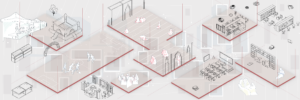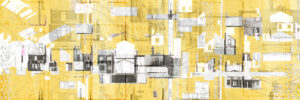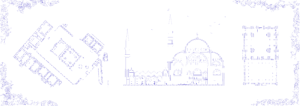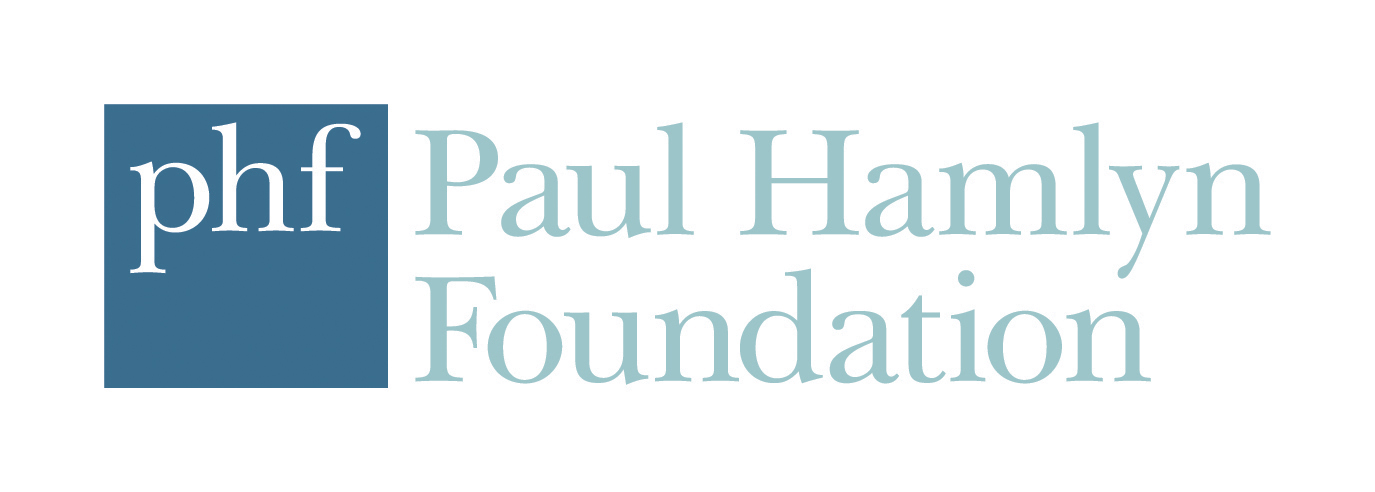Back to Basic: The Prophetic Approach
Over the last 200 years, mosques have made their way into the British urban landscape. After World War II, Muslim migration to the UK increased and the population has grown incrementally since. This growth was concentrated within inner city areas as many migrants came to work in industry due to labour shortages. Space limitations within the crowded cities informed the spaces mosques could occupy. While 20 per cent of mosques in the UK are purpose-built, the remainder is largely house or building conversions.
A recent survey undertaken by Mimbar360 highlighted that 95 per cent of users would like to see more services provided by their local mosque. The challenge with some mosques in the UK is the focus on aesthetics or building large without considering the prophetic model. Reflecting on the Prophet Muhammad’s (pbuh) building experience of the first mosque amidst the Hijrah from Mecca to Medina, lessons can be applied to designing mosques in the UK. Some key lessons include the function-form relationship, respect for the environment, and promoting just social interactions which can help to increase their accessibility.
The Prophet’s Mosque was considerate and thoughtful in every aspect of its conception. He taught that the spirit of excellence and striving for it should transcend into every stage of creating a mosque from site selection, conceptualisation and its construction. This can be applied to mosque design today through considering sustainability, improving existing spaces, maximising daylight and sunlight, the user experience, and programmes to serve local communities. Secondly, the form of the Prophet’s Mosque was modest and served its users. The concept of ‘form follows function’ in architecture suggests the building’s use should be the basis of its design rather than its aesthetics. Consequently, sometimes this results in a juxtaposition between a mosque’s aesthetic and its surroundings. Massing can be informed by its function; however, the plan and its relation to context and is critical.
The notion that architecture should peacefully coexist between people, the built environment and nature was another aspect of the Prophet’s design approach. Sustainability practices were applied in his mosque by reusing materials such as date palm trees and pebbles to absorb the rainwater and prevent muddy areas inside. With the impact of climate change, mosques can implement strategies to minimise waste and their carbon footprint to demonstrate care to the environment. Sustainable methods can include utilising locally sourced materials, reusable energy, energy conservation or minimal structural intervention if utilising an existing building. Considering this at the early stages of a mosque’s design can improve its longevity.
Promoting just social interactions was integral to the Prophets building practice. The Prophet’s Mosque hosted programmes such as collective worship, government, a learning centre, medical centre, rehabilitation centre, welfare/charity and recreational activities. Furthermore, the location of Madinah in the middle between two existing settlements reiterated the message the mosque favoured no person regardless of their history, culture, economic status or affiliation. With the UK’s rich cultural diversity, even moreso the mosque can assist in welcoming those from different social and cultural backgrounds and provide a space for them to gain knowledge, learn and worship.
Mosques are multifaceted buildings and require the need to consider all users and surrounding context. Evaluating the design approach to mosques in the UK can be used as an opportunity to revive lessons from the prophet’s (pbuh) architecture practice. A holistic consideration of all factors creates a design that is sensitive, thoughtful and in tune with its surroundings. In this way, mosques can work towards being advocates for their community and improve the experience of their users.










